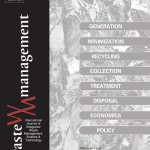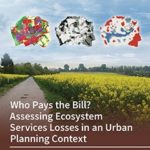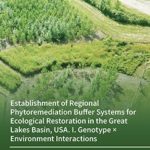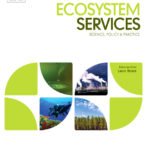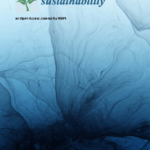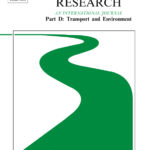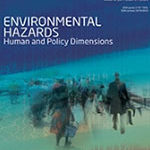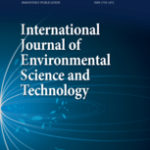
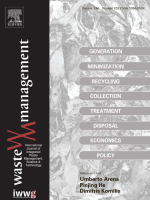
Mixed-method approach incorporating Geographic information system (GIS) tools for optimizing collection costs and convenience of the biowaste separate collection
Construction of the economic model for the organic waste transport optimalization.
Abstract: Nowadays, dealing with organic waste (or biowaste) remains a global phenomenon. Especially developing countries worldwide generate more than 50 percent organicwaste. In the European Union (EU) with a share of 34%, biowaste is a dominantfraction of the municipal waste (EEA, 2020). Therefore, separate collection at source and environmentally sound treatment of biowaste are of key importance. An intensive optimisation of biowaste separate collection is needed to balance demands of municipal representatives and households’ needs. Based on the mixed-method approach we developed a MCDA model complemented by expert-based weighting assessment and combined with the GIS localisation tools aimed at the optimisation of biowaste container locations that reflects various spatial conditions, preconditions for the localisation of containers and its cost intensity. We concluded that changing the density of containers, distance between the address point and container, and selecting container locations that respect the habits of households and demands of the collection technology significantly affect the total and collection costs. We confirmed that the decreases in the total costs were not significant for maximum walking distances of over 95 m, and would approach zero for distances of over 230 m. When the maximum walking distance exceeds 268 m, 40% of all inhabitants would not participate in the system as it would be inconvenient for them. A recycling campaign is needed to increase their willingness to participate in the system. We provided arguments for decision-makers how to balance convenience of the biowaste separation system and collection costs by proper localisation of biowaste containers.
Citation and link: Slavík, J., Dolejš, M., & Rybová, K. (2021). Mixed-method approach incorporating Geographic information system (GIS) tools for optimizing collection costs and convenience of the biowaste separate collection. Waste Management, 134, 177–186.
The Value of Urban Nature in Terms of Providing Ecosystem Services Related to Health and Well-Being: An Empirical Comparative Pilot Study of Cities in Germany and the Czech Republic.
How do city dwellers feel in urban greenery? How does this greenery affect their health and well-being? And what types of urban greenery do residents prefer the most?
Abstract: The quality of life in our cities critically depends on the intelligent planning and shaping of urban living space, in particular urban nature. By providing a wide range of ecosystem services (ES), urban nature essentially contributes to the well-being of city dwellers and plays a major role in avoiding common diseases through its positive impact on physical and mental health. Health is one of the most important factors underlying human welfare and is, thus, vital to sustainable development. The ES of urban green space provide other social-cultural functions alongside public health, for example by fostering environmental justice and citizenship participation. Thus, they should always be considered when searching for solutions to urban problems. The aim of this research was to determine the impact of green areas in three selected cities on the health and well-being of people by self-reporting of green areas’ visitors. To this end, we posed the research question: which types and characteristics of urban green space are most appreciated by city dwellers? Based on our findings, we have drawn up recommendations for practices to promote better living conditions. We have also pinpointed obstacles to and opportunities for leisure time activities as well as ways of supporting the public health of citizens.
Syrbe, R., Neumann, I., Grunewald, K., Brzoska, P., Louda, J., Kochan, B., Macháč, J., Dubová, L., Meyer, P., Brabec, J., Bastian, O. (2021). The Value of Urban Nature in Terms of Providing Ecosystem Services Related to Health and Well-Being: An Empirical Comparative Pilot Study of Cities in Germany and the Czech Republic. Land, 10 (4): 341. https://www.mdpi.com/2073-445X/10/4/341
Achieving Robust and Socially Acceptable Environmental Policy Recommendations: Lessons from Combining the Choice Experiment Method and Institutional Analysis Focused on Cultural Ecosystem Services
The article describes how the use of a combination of quantitative and qualitative scientific methods could contribute to the design of socially acceptable environmental policy recommendations.
Abstract: The reflection of ecosystem services in environmental policy has recently become a key aspect in solving environmental problems occurring as a consequence of their overburdening. However, decision makers often pay attention predominantly to results of quantitative (monetary valuation) methods. This article explores a new way of combining quantitative and qualitative methods that has proven to be a useful practice for achieving better environmental governance. We combine the (quantitative) choice experiment method and (qualitative) institutional analysis as full and equal complements. In our approach, the goal of qualitative institutional analysis is not to verify the adequacy of willingness-to-pay results but rather to better address cultural and social perspectives of society representatives. Such an approach increases the robustness of policy recommendations and their acceptance in comparison with isolated applications of both methods. To verify this general premise, both methods were applied in the territory of the Eastern Ore Mountains in the Czech Republic to capture preferences and attitudes of local stakeholders as well as tourists towards small-scale ecosystems. The results confirm that preference calculations regarding aesthetic values of ecosystems need to be complemented with facts about institutional settings and barriers in order to better address locally relevant recommendations for decision makers, such as the introduction of new economic instruments (e.g., local taxes or entrance fees). The findings of this study can also be considered for governance of larger local, common-pool resources such as (public) forests or protected areas.
Louda, J., Vojáček, O., Slavíková, L. (2021). Achieving Robust and Socially Acceptable Environmental Policy Recommendations: Lessons from Combining the Choice Experiment Method and Institutional Analysis Focused on Cultural Ecosystem Services. Forests, 12 (4): 484. https://www.mdpi.com/1999-4907/12/4/484
Lessons learned from implementing the ecosystem services concept in urban planning
What is the experience with implementing the concept of ecosystem services in the practice of urban planning in 10 European cities?
Abstract: This paper presents a summary of lessons learned from implementing the ecosystem services (ES) approach into urban planning practice in different European urban settings. We summarise a survey co-created with, and presented to, researchers and end-users in city administrations from ten European case study cities. To complement the expert analysis, 14 semi-structured interviews were conducted among stakeholders to assess the use of ES in practice in urban settings. There was strong agreement between scientists and practitioners on both the opportunities and the barriers to uptake the ES concept in urban planning practice. Key agreements were that the ES concept supports decision-making as well as spatial planning, it is most useful as a communication tool, and monetarisation and public pressure can be considered as promoting factors. Barriers are lack of evidence including case studies, standardised methods and criteria to evaluate nature and its benefits, lack of legislations/reform, limited capacity and reluctance to apply ES in planning practice, and limited public involvement. On individual aspects, such as the monetarisation of ES, views differed both among the scientists and the practitioners. Derived from our investigations we summarize in which circumstances the ES concept is most relevant and useful for urban planners and decision-makers.
Grunewald, K., Bastian, O., Louda, J., Arcidacono, A., Brzoska, P., Bue, M., Cetin, N., Dworczyk, C., Dubová, L., Fitch, A., Jones, L., La Rosa, D., Mascarenhas, A., Ronchi, S., Schlaepfer, M., Sikorska, D., Tezer, A. (2021). Lessons learned from implementing the ecosystem services concept in urban planning. Ecosystem Services, 49, 101273; https://www.sciencedirect.com/science/article/abs/pii/S2212041621000310?via%3Dihub
Food Provision, Social Interaction or Relaxation: Which Drivers Are Vital to Being a Member of Community Gardens in Czech Cities?
Why are city dwellers paticipating in urban gardeing and what motivates people to became a member of community garden?
Abstract: Urban gardening provides city dwellers with a wide range of benefits. Research dealing with the benefits of community gardens (CG) is often qualitative, focused on their founders’ motivations. The objective of our contemporary quantitative study is to understand why the inhabitants of Czech cities join CGs. The paper answers the research question: “What drivers exist for members’ participation in CGs?” It also deals with how the drivers of CG members differ across CGs’ locations in different urban structures. The data were obtained through an online survey from 28 CGs across Czechia, in both the capital and smaller cities. The importance of the different drivers was examined using statistical analysis and logit models. The research shows that the main motivation for the members is not crop production itself but, rather, the spending of leisure time, social contact and relaxation. Other key drivers include the passing on of experience and knowledge about nature to children, which is found mostly among the members with previous cultivation experience. Based on our results, CGs may contribute to the development of public life and to the improvement of public space; hence, the greater support by local decision makers or spatial planners can be justified.
Citation: Dubová, L., Macháč, J., Vacková, A. (2020). Food Provision, Social Interaction or Relaxation: Which Drivers Are Vital to Being a Member of Community Gardens in Czech Cities?, Sustainability, 12, 9588; doi:10.3390/su12229588
Sustainable urban mobility: One definition, different stakeholders’ opinions
The paper analyzed attitudes and view of selected key actors on sustainable urban mobility, conditions for strategic transport planning and the main barriers to the implementation of transport measures.
Abstract: During recent decades, the debate on how to sustain urban mobility has accelerated. Transport decision-making has been more reflective of sustainability issues and quality of life in cities; this process has especially accelerated with the setting of modern urban mobility planning concepts, substantially focusing on transport demand regulation and management, and Sustainable Urban Mobility Plans taking over the role of cities’ primary transport-related strategic documents. The approaches to sustainable mobility visioning and planning differ within cities, as do their key stakeholders’ opinions. Our research aims to reveal the main shared viewpoints on the preferred paths towards sustainable urban mobility. We use the Q method, which is a statistical method to study subjectivity. It enables determination of characteristic shared viewpoints on a particular subject. A qualitative analysis assessing subjective opinions is combined with the quantitative approach of a factor analysis of statements ranked by respondents. The study was undertaken on 36 carefully selected stakeholders situated within the Czech Republic. Our results indicate that even stakeholders sharing the same definition of sustainable urban mobility may substantially differ in regard to their ideas on how to achieve it. Furthermore, we show that some of the attitudes expressed and measures appreciated by our respondents would not be recognised as sustainable by environmentalists. There is still a wide gap between sustainable mobility theory and its implementation in practice. All these findings represent barriers to sustainable mobility development in urban areas. Therefore, the paper also conveys relevant policy implications.
Citation: Brůhová Foltýnová, H., Vejchodská, E., Rybová, K., & Květoň, V. (2020). Sustainable urban mobility: One definition, different stakeholders’ opinions. Transportation Research Part D, 87, https://doi.org/10.1016/j.trd.2020.102465
Download: Paper available at the publisher here
Development and implementation of the concept of disproportionate costs in water management in Central Europe in the light of the EU WFD
Approches to exemption justifications from the good water status according to Water Framework Directive
Abstract: Many Central European water bodies that failed to achieve the good ecological and chemical status required by the Water Framework Directive in the first management cycle are expected to again fail in the second cycle. An exemption from achieving good status may be applied for under certain circumstances but must be justified. One option is to show that achieving good status is not cost proportionate, but no uniform methodology for assessing proportionality exists in the EU. The paper maps the existing approaches to this type of justification in the Central European countries. The methods used to justify exemptions differ significantly among the countries. A large majority of reports mention monetary cost–benefit analysis, although a range of other methods such as distribution of costs, affordability and criterial cost–benefit analysis are also utilised. The findings show that countries that have experience with proportionality assessment from the first management cycle or have created clear and easy-to-use methodologies (or none) are more likely to justify the exemption by citing disproportionate costs; on the other hand, a higher complexity of methodology – such as used in the Czech Republic – creates incentives to avoid using the disproportionate-cost justification and to instead utilise other available types of justification.
Citation: Macháč, J., Brabec, J., & Vojáček, O. (2020). Development and Implementation of the Concept of Disproportionate Costs in Water Management in Central Europe in the Light of the EU WFD. Water Alternatives, 13(3), 3
Download: ↓here
Public and community conservation of biodiversity – rivalry or cooperation?
What is the history and current evolution of land trusts in post-socialist reality in Czech Republic?
Abstract: Although private or community initiatives for biodiversity conservation (such as land trusts) have a strong tradition in many countries, rigorous evidence of recently evolved movements in post-socialist countries is missing. This study describes the evolution of Czech land trust movement and analyses their representatives’ motivation for engagement in biodiversity conservation. It also investigates the intensity of interaction among public and land trust conservation efforts. For this purpose, we identified localities in which the territory managed by Czech land trusts overlaps with small-scale public nature reserves managed by regional governments. We conducted semi-structured face-to-face interviews with representatives of all NGOs and regional officials in-charge. Our qualitative analysis revealed that some regional biodiversity conservation officials see land trusts as partners, but others are rather indifferent to, or uninformed about, their activities. Additionally, land trust representatives see themselves as complementing the public effort: their main motivation for engagement is to facilitate biodiversity conservation in addition to the public provision.
Citation: Slavíková, L., Smutná, Z., Žambochová, M., & Valentinov, V. (2020). Public and community conservation of biodiversity–rivalry or cooperation? GeoScape, 14(1), 36
Download: ↓here
Approaches to state flood recovery funding in Visegrad Group Countries
Paper compares state flood recovery funding in the so-called Visegrad Group Countries (V4), i.e. Czechia, Hungary, Poland and Slovakia, over the past 30 years of their democratic history.
Abstract: Flood recovery is an important period in the flood risk management cycle. Recently, flood recovery has become viewed as an opportunity for future flood damage mitigation. Financial flows to cover flood damages and rules regarding their allocation are crucial for supporting or undermining mitigation efforts. In this paper, we map and compare state flood recovery funding in the so-called Visegrad Group Countries (V4), i.e. Czechia, Hungary, Poland and Slovakia, over the past 30 years of their democratic history. We apply a qualitative comparative approach to identify differences and similarities in risk sharing and state flood recovery funding approaches among these countries. Additionally, we reveal how risk sharing is addressed by existing flood recovery funding schemes. The results indicate that national governments have a low willingness to institutionalise ex-ante compensation schemes. Ad hoc instruments initiated shortly after disastrous flooding usually do not provide incentives to reduce future flood damages.
Citation: (2020) Approaches to state flood recovery funding in Visegrad Group Countries, Environmental Hazards, 19:3, 251-267, DOI: 10.1080/17477891.2019.1667749
Externalities in agriculture: How to include their monetary value in decision-making?
From an economic point of view, implementation of measures in agriculture in the South Moravian Region makes sense.
Abstract: Soil protection and sustainable agriculture have become a key issue in Common Agricultural Policy. Emphasis is being placed on climate-smart agriculture, nature-friendly agricultural technologies and implementation of a range of nature-based measures to protect soil, retain water in landscape, etc. Recent agricultural policy is mostly based on qualitative assessment of the current state and impacts of technologies. Economic assessment is still missing, although subsidies and other forms of financial support are provided from both national and European Union funds. Externalities in agriculture not only generate social costs and profits for the current generation but also strongly affect future well-being. The objective of this paper is to present a newly developed approach that enables monetary assessment of externalities in agriculture. The process of monetary assessment means inclusion and calculation of all costs and benefits, including positive and negative externalities going beyond financial revenue. The methodology is based on modified cost–benefit analysis using the concept of ecosystem services. The proposed method is demonstrated on a case study in the South Moravian Region of the Czech Republic. This region has been struggling with drought in the last few years, but its agricultural technologies are not adapted and appropriate nature-based solutions are not implemented. Economic analysis focuses on assessment of externalities and possible measures. It covers operating and investment costs; the loss of profits due to decreasing production; and benefits consisting mainly of prevented loss of regulating services. The results show that implementation of measures is always preferable regardless of climate change and avoids society loss.
Citation: Macháč, J., Trantinová, M., Zaňková, L. (2020). Externalities in agriculture: How to include their monetary value in decision-making?, International Journal of Environmental Science and Technology, 18 p., doi: https://doi.org/10.1007/s13762-020-02752-7


